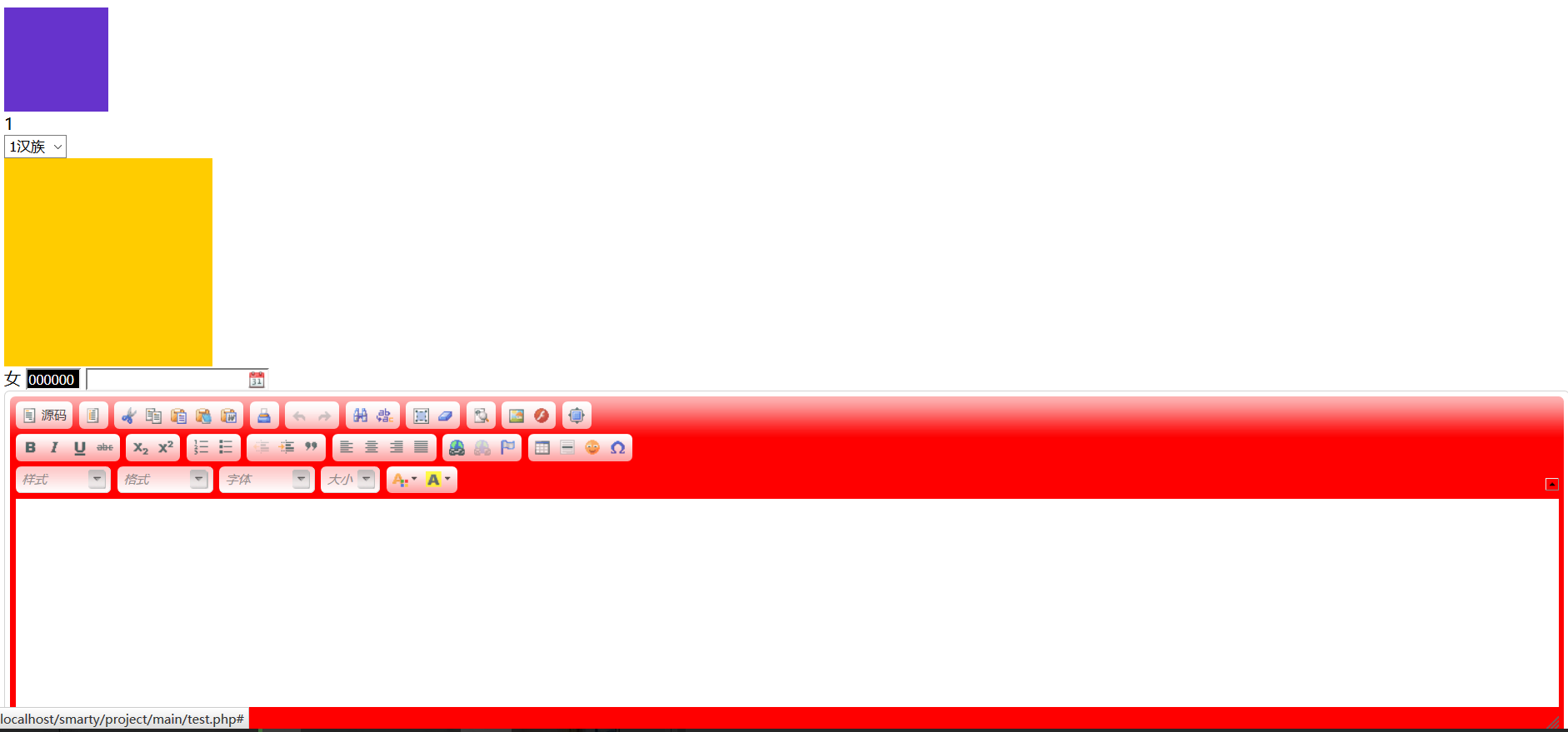smarty 总结和分析
虽然smarty现在已经废弃不用,但是它的原理我们需要了解一下,这也是TP框架的一部分原理,它把前后端分离开,这样前端只需要写静态网页,后端只需要处理数据库和php文件就可以了,phpcms的思路也大抵相同。
smarty里面的核心文件是./project/libs/Smarty.class.php
//这个是Smarty.class.php的思路,其实完整的很复杂
<?php class Smarty { $ldemilter = "{"; //左分隔符 $rdemilter ="}"; //右分隔符 $attr = array( ); //用来存储变量的关联数组 //向模板里面注册变量 function assign($key,$value) { $this->attr[$key] = $value; } //显示模板的方法(实现前后端分离) function display($url) { //1.获取静态模板的内容 $str =file_get_contents($url); //2.根据正则匹配str里面出现的所有{}里面的内容 //{$a} -> <?php echo $attr[$a] ?> //3.将替换好的页面保存成临时文件 //首先新建一个 文件 touch("./test.php"); //将内容保存在里面 file_put_contents(); //4.将临时文件拿到当前页面显示 include("./test.php"); } }
然后有一个配置文件:init.inc.php
<?php define("ROOT",str_replace("\\","/",dirname(__FILE__)).'/'); //常量ROOT中指定项目根目录 //echo str_replace("\\","/",dirname(__FILE__)).'/'; //获取当前文件所在的位置 require ROOT.'libs/Smarty.class.php'; //加载Smarty类文件 $smarty = new Smarty(); //实例化Smarty对象 define("CSS_PATH","/project/css/"); define("JS_PATH","/project/js/"); //$smarty -> auto_literal = false; //就可以让定界符号使用空格 $smarty->setTemplateDir(ROOT.'templates/'); //设置所有模板文件存放位置 //$smarty->addTemplateDir(ROOT.'templates2/'); //添加一个模板文件夹 $smarty->setCompileDir(ROOT.'templates_c/'); //设置编译过的模板存放的目录 $smarty->addPluginsDir(ROOT.'plugins/'); //设置为模板扩充插件存放目录 $smarty->setCacheDir(ROOT.'cache/'); //设置缓存文件存放目录 $smarty->setConfigDir(ROOT.'configs/'); //设置模板配置文件存放目录 $smarty->caching = false; //设置Smarty缓存开关功能 $smarty->cache_lifetime = 60*60*24; //设置缓存模板有效时间一天 $smarty->left_delimiter = '<{'; //设置模板语言中的左结束符 $smarty->right_delimiter = '}>'; //设置模板语言中的右结束符 ?>
所以我们在使用php是先引用init.inc.php文件(注意:我们在访问的是php文件,显示的才是html文件,访问的和显示的文件不同)
现在我们在main文件里建一个php文件:text.php,我们访问text.php来显示text.html.
<?php
//首先先引用init.inc.php,init.inc.php已经造好对象,所以不需再造对象了
include("../init.inc.php");
$arr = array(
array("n001","汉族"),
array("n002","回族"),
array("n003","苗族")
);
$sex = false;
//注册变量
$smarty->assign("s",$sex);
$smarty->assign("arr",array(1,2,3,4,5));
$smarty->assign("shuzu",$arr);
$smarty->assign("name",11);
//显示模板
$smarty->display("test.html");
现在再建个text.html用来显示。
<!DOCTYPE html PUBLIC "-//W3C//DTD XHTML 1.0 Transitional//EN" "http://www.w3.org/TR/xhtml1/DTD/xhtml1-transitional.dtd"> <html xmlns="http://www.w3.org/1999/xhtml"> <head> <meta http-equiv="Content-Type" content="text/html; charset=utf-8" /> <title>无标题文档</title> </head> <body> <{if $name eq 11}> <div style="width:100px; height:100px; background-color:#63C"></div> <{else}> <div style="width:100px; height:100px; background-color:#F00"></div> <{/if}> <div><{$arr[0]}></div> <select> <{foreach $shuzu as $v}> <option value="<{$v[0]}>"><{$v@first}><{$v[1]}></option> <{/foreach}> </select> <{lianjie}> <div style="width:200px; height:200px; background-color:#FC0"></div> <{/lianjie}> <{sex sex=$s}> <{color name='color'}> <{date name='date' time=1}> <{textarea name='uid' toolbar='full' color='red'}> <{/textarea}> </body> </html>
效果截图:

知识点总结 1.配置文件加载 <{config_load file='文件名.conf' section='块'}> //file找哪个配置文件,section找哪个块元素 例如:<{config_load file='test.conf'}> 调用配置文件 <{#元素名#}> 例如:<div style="background-color:<{#color#}>"><div>
2.配置文件的块
例如:[one]
color = green
[two]
color = red
3.<{$smarty.now}> //当前时间的时间戳
<{$smarty.const.常量}> //访问php常量
date_format //格式化日期 <{$smarty.now|date_format:"%Y-%m-%d %H:%M:%S"}>


